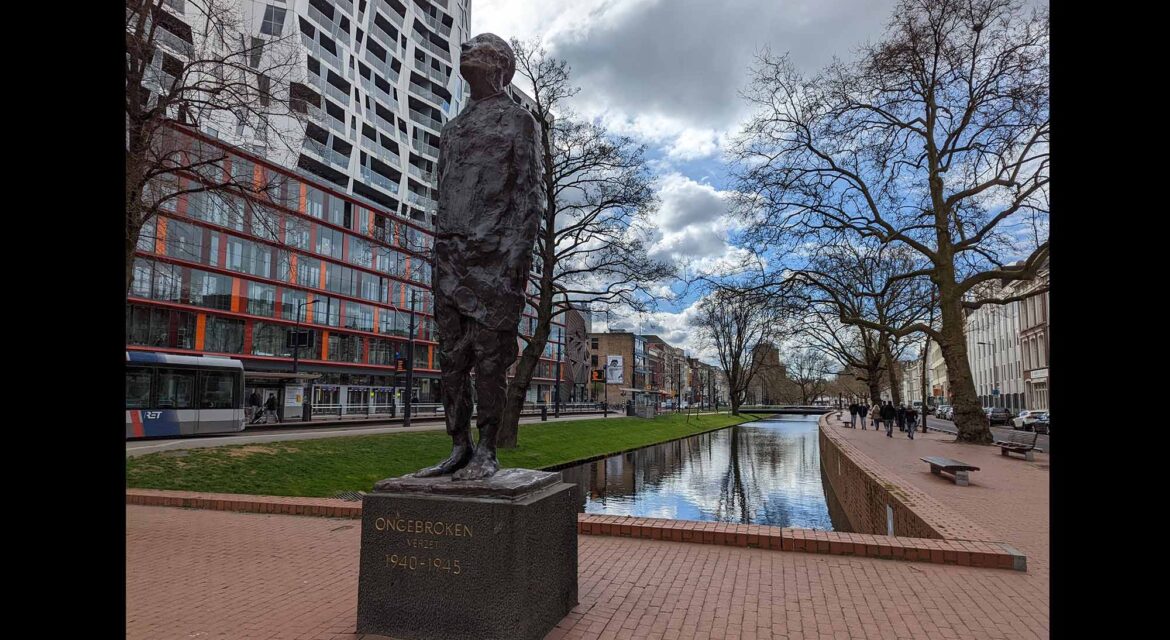 Residing on the bank of the Westersingel canal that runs through Rotterdam in the Netherlands, the Rotterdam Sculpture Terrace features a variety of sculptures from artists across the 20th century. Celebrating the distinct identities of multiple regions and eras, the landmark fulfills a vision of creativity and culture that has transformed what might otherwise be an empty river bank into something that attracts the attention of audiences from all over.
Residing on the bank of the Westersingel canal that runs through Rotterdam in the Netherlands, the Rotterdam Sculpture Terrace features a variety of sculptures from artists across the 20th century. Celebrating the distinct identities of multiple regions and eras, the landmark fulfills a vision of creativity and culture that has transformed what might otherwise be an empty river bank into something that attracts the attention of audiences from all over.

“More cultural energy than it costs”
 Opened in 2001 during Rotterdam 2001, European Capital of Culture, the Rotterdam Sculpture Terrace is connected to the central vision of that event, which was about showcasing “more cultural energy than it costs.” This effort would see such efforts support an urban improvement process that connected the creative energy of the community to facilitate major public-private partnerships like the Rotterdam Sculpture Terrace.
Opened in 2001 during Rotterdam 2001, European Capital of Culture, the Rotterdam Sculpture Terrace is connected to the central vision of that event, which was about showcasing “more cultural energy than it costs.” This effort would see such efforts support an urban improvement process that connected the creative energy of the community to facilitate major public-private partnerships like the Rotterdam Sculpture Terrace.
While it has grown since it was originally conceived, the Rotterdam Sculpture Terrace has always showcased a variety of art styles, ranging from a modern classical bronze by Auguste Rodin to more abstract works like the one by Fritz Wotruba. All of these pieces on the terrace have individual significance and collective meaning that audiences can interpret and engage in multiple ways.
The bronze Ongebroken Verzet statue from 1965 means Unbroken Resistance. Created by Hubert van Lith, it symbolizes the Rotterdam resistance or World War II. La Grande Musicienne by Henri Laurens was purchased to accompany the completion and opening of the Doelen concert hall in 1966. It depicts a kneeling woman playing the lyre. The Braid by Kalliopi Lemos was installed in 2020. Intended to raise questions about the role of femininity in modern society, it compels questions just like surrounding pieces like Reclining Figures from 1969 and Untitled from 1999.
In fulfilling the vision of creative energy associated with the Rotterdam 2001 event, the Rotterdam Sculpture Terrace has become a landmark that connects multiple eras of the city, ensuring the effort to celebrate the culture and collective spirit of the region will positively impact audiences in the present and future.

True Cultural Legacy
 Featuring numerous pieces of unmissable monuments, the Rotterdam Sculpture Terrace highlights what it can mean when a vision for creativity defines a true cultural legacy. In doing so, it has transformed a space and city in ways that will continue to resonate with the surrounding community of Rotterdam and beyond.
Featuring numerous pieces of unmissable monuments, the Rotterdam Sculpture Terrace highlights what it can mean when a vision for creativity defines a true cultural legacy. In doing so, it has transformed a space and city in ways that will continue to resonate with the surrounding community of Rotterdam and beyond.

